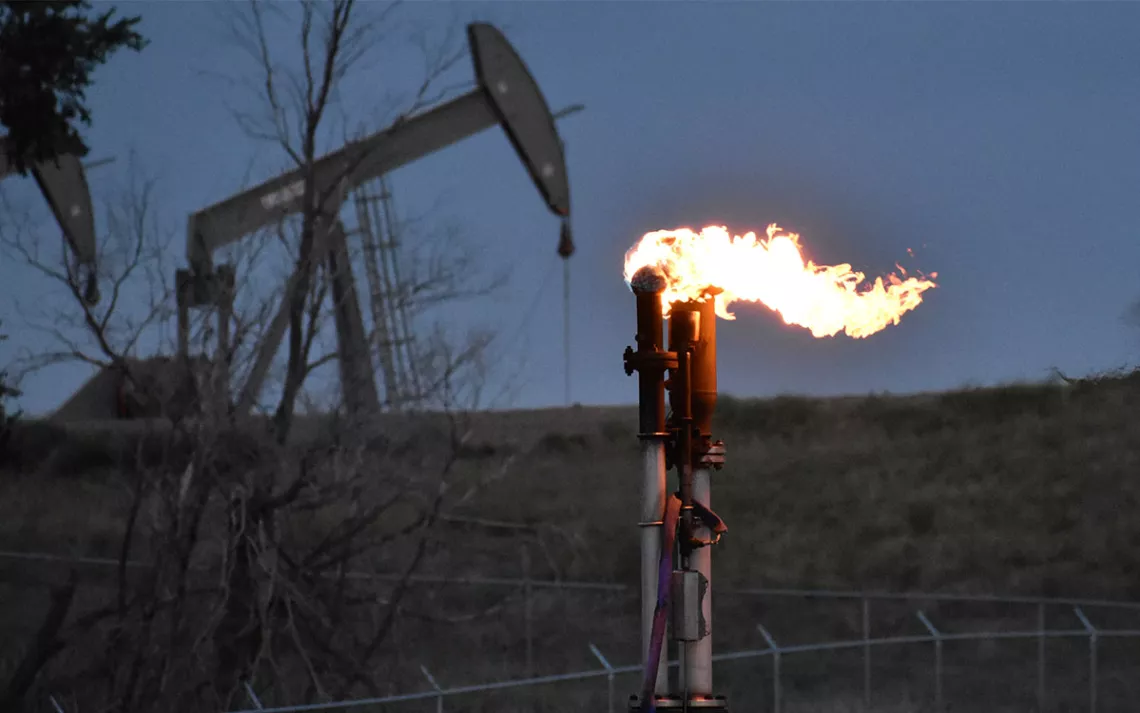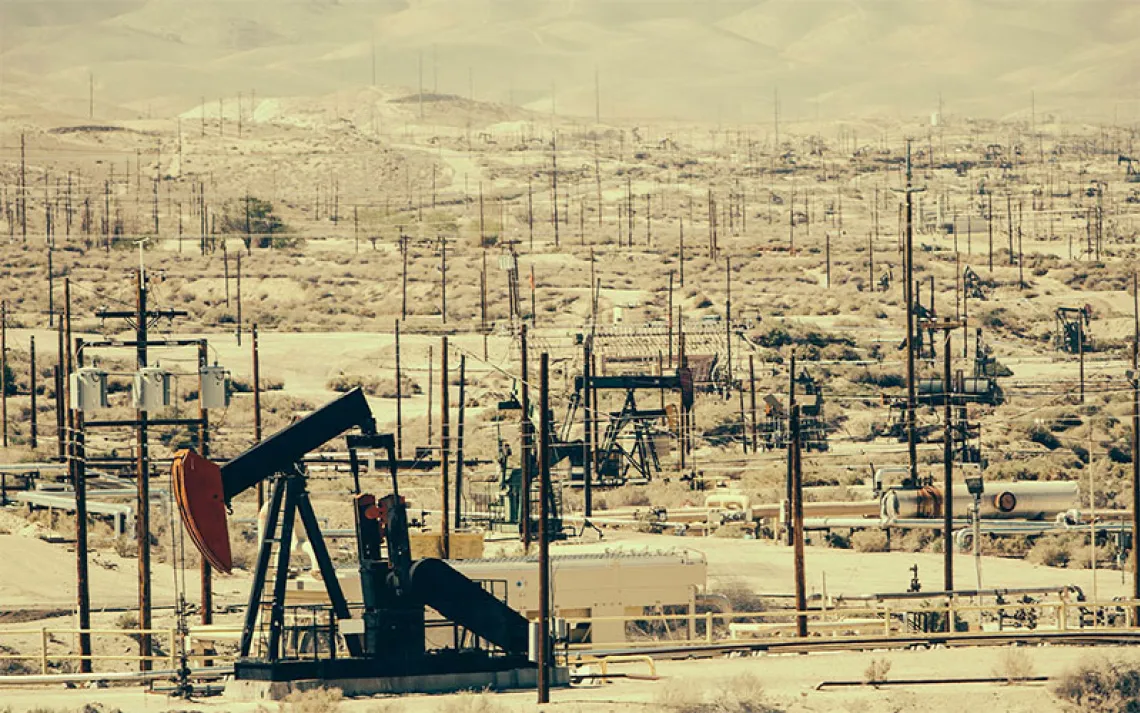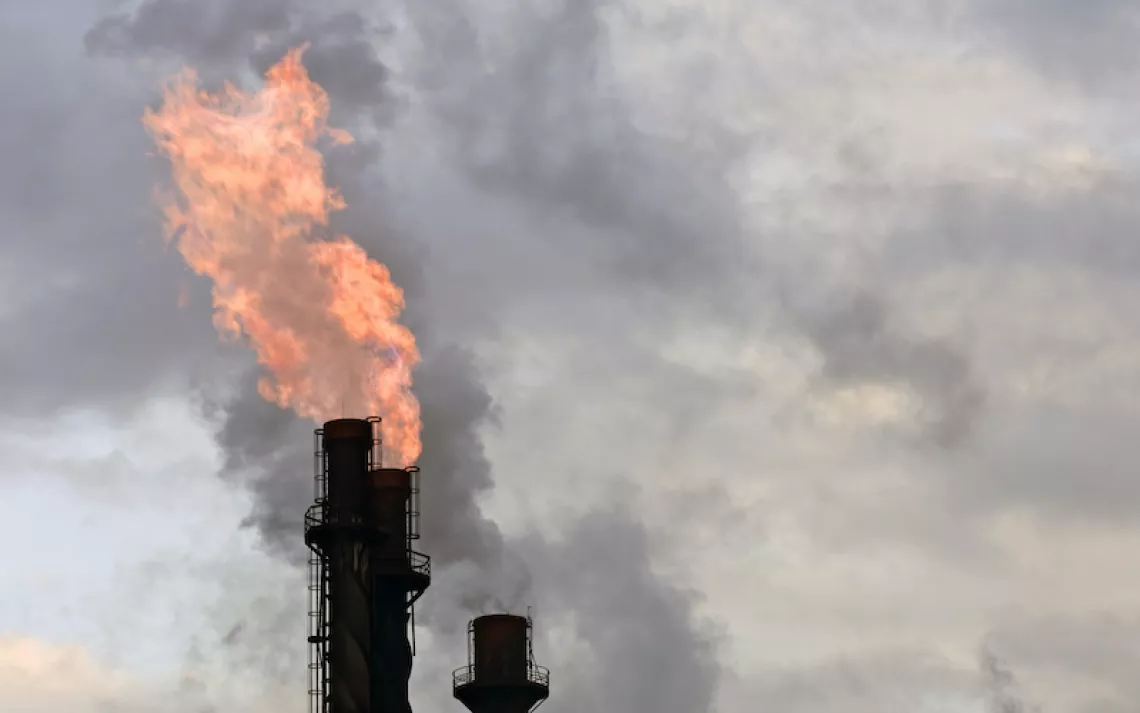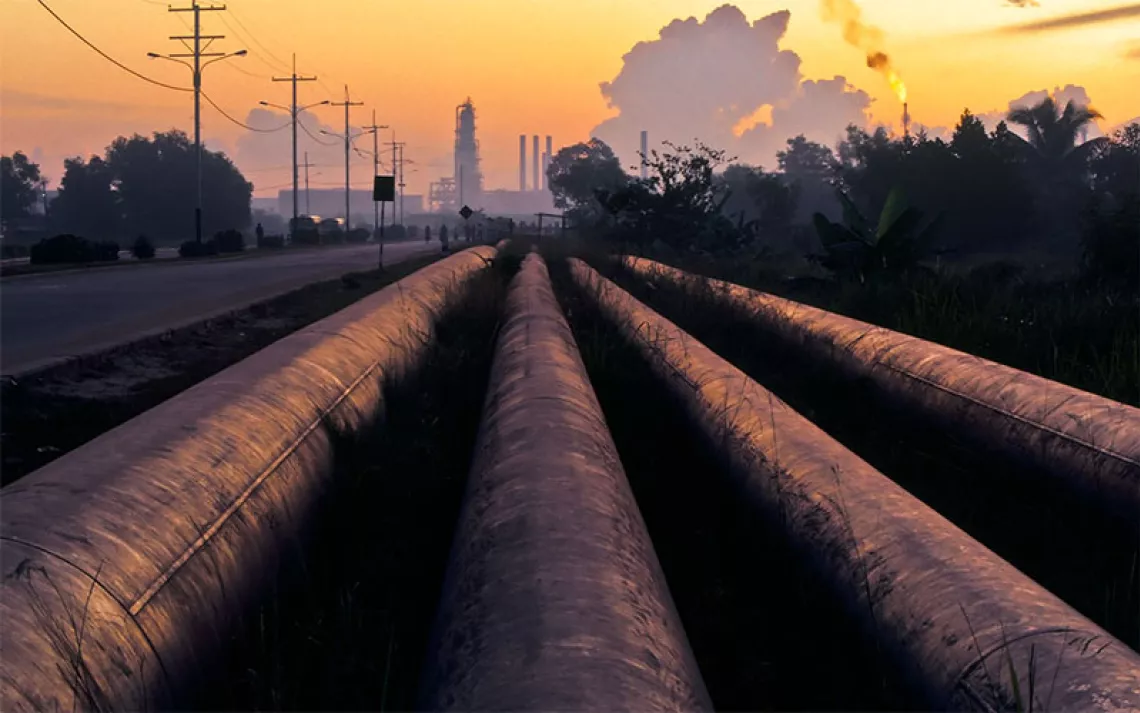New EPA Methane Rules Empower States and Residents to Hold Polluters Accountable
The new suite of measures would save companies millions in the process

For the first time, new federal rules empower states and residents to hold the fossil fuel industry accountable for releasing methane—an invisible, odorless “super pollutant”—as well as other smog-forming chemicals that leak from its equipment. These are the same emissions, scientists say, that cause global warming and contribute to a variety of impacts in nearby communities.
The long-awaited Environmental Protection Agency rules, announced this month at the COP28 global climate conference in Dubai, give states two years to require oil and gas companies to retrofit hundreds of thousands of wells with equipment that prevents methane leaks. Oil and gas operations are the nation’s largest industrial source of this gas, which is responsible for nearly one-third of today’s warming.
“For far too long, oil and gas companies were allowed no limits on this pollution—these rules put an end to that,” said Julie McNamara, deputy policy director, climate and energy at the Union of Concerned Scientists. “These rules are a necessary first step; now comes implementation and enforcement.”
Methane traps more than 80 times as much heat in the atmosphere as carbon dioxide over the course of 20 years but exits it more quickly. The new EPA rules seek to eliminate the emission of about 58 million tons of methane from 2024 through 2038. A reduction of that scale would produce an immediate impact on global average temperatures, according to the International Energy Agency. The EPA rules will also cut volatile organic compounds, or VOCs, by 16 million tons over a similar period, federal estimates show.
Even in the handful of states that already require companies to eliminate methane emissions, the EPA rules strengthen accountability by mandating the industry conduct more frequent equipment inspections and allowing residents to report leaks to the agency. If states fail to regulate methane emitted by oil and gas operations, the EPA can step in. Researchers estimate about 70 percent of methane released by the energy sector can be eliminated.
The new package of measures is just one of dozens the Biden administration has instituted to meet its goal to halve the nation’s greenhouse gas emissions by 2030. Scientists agree the window is rapidly shrinking for the world to limit warming to 1.5°C, or 2.7°F—the level after which they say natural disasters made more intense by climate change, such as droughts, floods, and wildfires, will escalate.
Regulators have struggled to keep up with fossil fuel extraction. The US solidified its lead as the world’s largest oil and gas supplier in 2022, with production hitting 12 million barrels a day, outpacing Saudi Arabia and Russia. Production is on track to hit record levels this year, led by increased activity in the Permian Basin. Among the world’s most productive oil fields, the basin, which straddles New Mexico and Texas, also ranks among the planet’s biggest emitters of methane.
Red states, including Texas, pushed back on the new EPA rules, saying they would drive prices up for consumers because petroleum “helps make more than 96 percent of everyday consumer items like plastics, food, medicine, and more.” Oil and gas trade groups said they are reviewing the regulations. “To be truly effective, this rule must balance emissions reductions with the need to continue meeting rising energy demand,” said Dustin Meyer, the American Petroleum Institute’s senior vice president of policy, economics, and regulatory affairs, in a statement.
The EPA says that cost-effective emissions reduction technology required under its rules would ultimately allow companies to recoup millions of dollars by selling the recovered gas. By fixing methane leaks in equipment along its supply chain, and eliminating or reducing the amount of gas vented and flared—or burned off—at well sites, the industry will recover up to $980 million in gas a year, regulators estimated. The federal government also said the climate and health benefits associated with reduced emissions derived from such regulations could reach up to $7.6 billion a year, after considering the compliance costs and savings from recovered gas.
“The costs look pretty minimal in relation to the capital spending of the companies and the value of the product and the value of avoiding the pollution,” said David Doniger, senior strategic director, climate, and energy at the Natural Resources Defense Council. “The industry is going to have a hard time arguing these fixes aren’t feasible technically, or are too costly.” In comments on the proposed rule earlier this year, companies expressed concern about getting the proper parts to prevent leaks, citing supply chain bottlenecks. Federal regulators responded by giving them more leeway in the rule to obtain such equipment.
Doniger and others called out a citizen-policing provision in the new EPA rules that allows residents to hold their states accountable for ensuring the industry prevents methane leaks. This super-emitter program empowers people to use technology to discover wells that leak methane. Emissions from a small number of sources are responsible for as much as half the methane emitted by fossil fuel operations, studies show. Environmental groups applauded the provision, saying new satellites designed to map and measure significant methane plumes, and hand-held optical gas imaging cameras that hone in on leaks of invisible toxic gases wafting from pipes and other equipment, are set to multiply the number of residents able to police the industry.
Once residents identify leaks, EPA rules require them to report the information to the agency, which will vet it before passing it along to owners and operators. “This is a promising step in the right direction,” said Andrew Klooster, a Colorado field advocate for the environmental nonprofit Earthworks, who films emissions from oil and gas wells with imaging cameras. After he documents leaks, the technician reports them to state regulators.
“Disproportionately impacted communities don’t have resources to do this type of monitoring,” Klooster added. He traveled to Colorado communities in 2023 to coach them in how to observe problems at well sites. “But pairing the data from our cameras with satellite data will help us get the collective evidence we need to hold operators of these super-emitter wells accountable.”
 The Magazine of The Sierra Club
The Magazine of The Sierra Club



